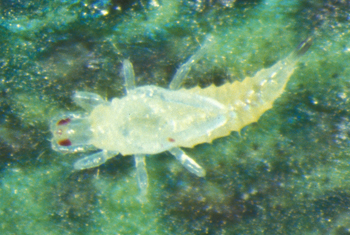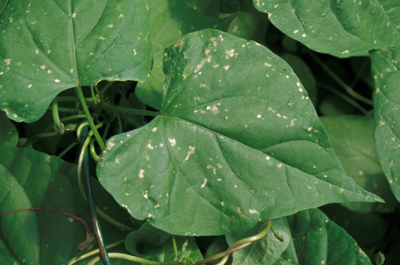Thrips
July 2, 2015
Sucking pests
Both adult and nymphal stages of thrips feed on leaves and flowers. Adults tend to be located in terminal flower buds or open flowers; nymphs are usually found on plant leaves.


Adult thrips, depending on the species, are less than 1.5 mm long and slender with wings that contain hairs. Nymphs resemble adults except that they lack wings.
Thrips typically feed on leaf buds before they open, which results in leaf abortion or flower deformation. Numerous species of thrips feed on herbaceous perennials. Several thrips species transmit viruses, including impatiens necrotic spot and tomato spotted wilt virus.

Thrips feeding causes scarring, stunting or distortion of leaves or flowers. Additionally, leaf tissue may appear sunken or indented. Black fecal deposits may be present on leaf undersides.
Management
Remove weeds from adjacent areas – many weeds serve as a reservoir for thrips and the viruses they transmit. Placing yellow sticky cards among plants, just above the canopy, will trap adults. Thrips control with contact insecticides may be difficult because they tend to reside in unopened terminal and flower buds. Sprays need to be applied when plants are young.
Print a PDF of this page: Thrips



 Print
Print Email
Email



